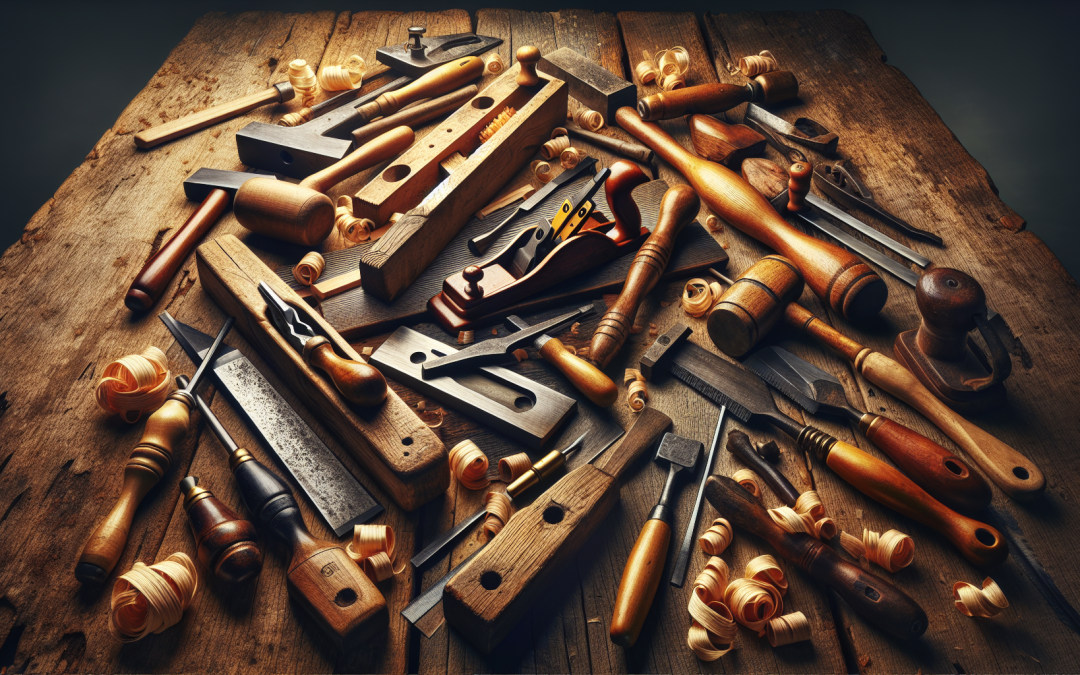As power tools have grown in popularity, there has been a considerable shift in the woodworking industry. However, let’s take a moment to appreciate the undying charm of hand tools and the essence of traditional woodworking.
A Heritage of Mastery: Essential Hand Tools
Hand tools have been the cornerstone of woodworking since time immemorial. They’ve crafted countless masterpieces and carved countless lessons for novice woodworkers. The essential woodworking tools are the saws, chisels, planes, and measuring tools. With these crucial instruments, the foundation of every beginner’s woodworking journey is moulded. These basic tools are paramount for learning foundational woodworking skills and should definitely not be overlooked in favour of power tools.
Power tools might speed up your work, but hand tools will teach you the nuances of the craft, how to understand wood and yield it to create the desired outcome. The precision of a chisel, the classic appeal of a hand plane, and the satisfaction derived from using hand saws, all form an integral part of the woodworking tradition that should definitely be experienced by all enthusiasts.
The Art of Avoiding Common Mistakes
Just as learning, making mistakes is also a significant part of the woodworking journey. However, it’s wisdom to learn from others’ mishaps such as poor measurements, weak joints, and incorrect tool usage. Proper troubleshooting of these recurring errors can prove to be an essential exercise for honing your woodworking skills.
Once you get the knack of traditional woodworking, its essence seeps in. Measuring twice and cutting once becomes a natural instinct. You start appreciating the importance of strong joints and correct tool usage. Mastery over avoiding common blunders can help you in building better habits in the workshop which could be priceless in your journey towards excellence.
Smooth Finishes: The Final Touch
Crafting a masterpiece doesn’t stop at the last cut. The ceremony of woodworking isn’t complete without the crowning jewel – the finish. The art of creating smooth finishes, which enhances the aesthetic of the project and provides a lasting protection, requires both dexterity and knowledge of various techniques.
From applying the right finish to preparation of wood surfaces and the correct application sequence, perfecting the final touches is an art in itself. It’s the last chapter in the story of every woodworking piece, defending it from wear and tear and highlighting its natural appeal.
Joinery Techniques: Piecing the Masterpiece Together
One of the intriguing aspects of traditional woodworking is its multifaceted joinery techniques. The classic joinery methods like dovetails and mortise-and-tenon have significant strengths and multiple uses in woodworking crafts.
These techniques are like the invisible bonds that hold the project together and can significantly affect its longevity. Each joint reflects the mastery and patience of the craftsman, showcasing skills honed through tireless practice.
Understanding the Language of Wood
Lastly being a skilled traditional woodworker means listening to the subtle, tell-tale signs that different types of woods whisper. Recognizing the properties of various wood species, such as their strength, grain, and workability, can help craftsperson determine the best material for each project.
In conclusion, bringing traditional woodworking back to life, appreciating hand tools, and detailing the timeless craftsmanship techniques is an homage to our ancestral artisans. It’s a journey worth taking, a heritage worth reviving even in a mechanized, power tool world. After all, the charm of hand tools and traditional woodworking techniques will always hold an irreplaceable place in our hearts.

